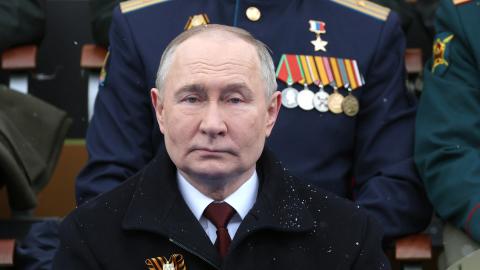Russian leader Vladimir Putin has threatened “densely populated” Eastern European cities in response to Western leaders’ allowing Ukraine to use their weapons to hit military targets inside Russia. This, together with the announcement that missiles provided by the United States helped Ukraine hit a Russian military site in Crimea, is likely to prompt more calls for Ukraine to “de-escalate.” But that’s a recipe for prolonging an already long war.
Instead, the U.S. should bolster the credibility of conventional and nuclear weapons around the region to deter Russian escalation — whether that escalation would take the form of hitting a NATO country with conventional weapons or crossing the nuclear threshold — and step up help for Ukraine to make gains on the battlefield.
This does not mean Russian nuclear threats should be treated as a bluff. Russia has invested in a large “battlefield” nuclear force that can hit European targets and has recently practiced doing so. Western leaders should take the threats seriously. But Russia’s nuclear threats shouldn’t compel NATO countries to back away from a plan for Ukrainian victory. Instead, the U.S. must make urgent changes to keep conflict away from the nuclear precipice. This will require the U.S. to accept the importance of its nuclear weapons and modify its approach to deterrence.
Since the end of the Cold War, U.S. nuclear policy has taken a two-pronged approach. It has maintained a nuclear-warhead arsenal with a triad of delivery systems (able to launch from land, sea, and air) to deter what was considered a more benign Russia and rogue states while also emphasizing the importance of arms control, disarmament, and certain unilateral restrictions. China’s nuclear program was, until recently, modest.
The deemphasis of nuclear weapons in the U.S. defense strategy has led some military planners to view investments in nuclear weapons as wasteful and as standing in the way of “usable” conventional weapons. But based on Beijing’s rapid and complex nuclear buildup and Moscow’s aggression, threats, and investment in theater-range and novel nuclear capabilities, both nations could threaten a calibrated nuclear strike, which could shock Washington into standing down rather than responding with its own nuclear weapons and risking escalation to defend far-away allies.
The U.S. should make an abrupt and muscular change in the role of its nuclear-deterrent force. To convince China and Russia that they should not go down this path — and that they will lose if they do — the U.S. should affirm that nuclear deterrence is its No. 1 priority. It should then budget, appropriate, and signal with nuclear weapons with that priority firmly in mind.
Practically speaking, Washington should deploy additional nuclear options in the most vulnerable regions in Europe and Asia to show China and Russia that it dare not employ a nuclear weapon anywhere, because the U.S. has credible nuclear responses of its own. For example, the U.S. should move forward with the rapid development and deployment of the nuclear sea-launched cruise missile (SLCM-N). Neither China nor Russia would be certain of its presence, but they would be sure of SLCM-N’s capability to strike promptly and penetrate modern air defenses.
There’s another practical step worth taking. This July, President Biden will gather fellow NATO leaders in Washington to celebrate 75 years of the alliance and chart a direction for the future. The summit presents a prime opportunity to officially recognize that Russia’s aggression and nuclear threats have effectively dissolved the NATO-Russia Founding Act. Intended to foster trust between NATO and Russia, the act also states that NATO nations should increase interoperability rather than increase the “permanent stationing of substantial combat forces.” The U.S. should then lead its allies to follow through with plans to bolster conventional multinational forces with permanent brigades from other NATO members. The U.S. will remain a coalescing force in Europe even as wealthy allies shoulder more of the defensive burden.
Officially recognizing that Russia has destroyed the NATO Founding Act would clear NATO’s path to thwart further Russian aggression and underscore the necessity of honoring agreements. In response to Russia’s nuclear threats, Polish president Andrzej Duda said, “If there were a decision by our allies to deploy nuclear weapons within the nuclear sharing area also on our territory in order to strengthen the security of NATO’s eastern flank, we are ready.” The United States should explore this offer and other U.S. deployment adaptations seriously.
Last, the U.S. should advance the missile-defense architecture around its own bases and with its allies to bolster the credibility of deterrence by causing its adversaries to doubt the success of coercive attacks.
Nuclear adversaries are betting on American fear of escalation and a lack of resolve to defend Western alliances. Americans may not want nuclear weapons to play a heavier role in its defense policy. But keeping the peace and deterring Xi Jinping and Vladimir Putin require it.



















